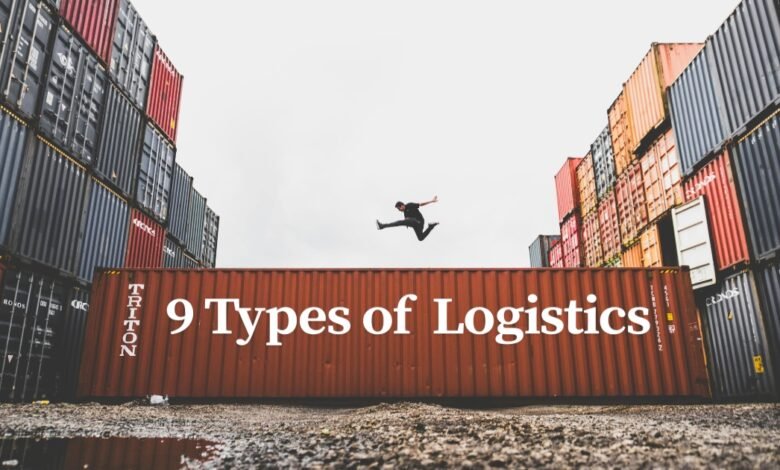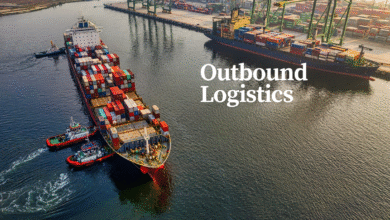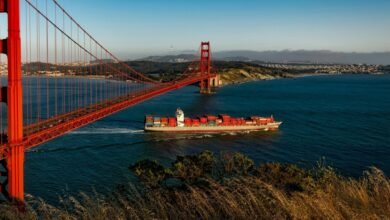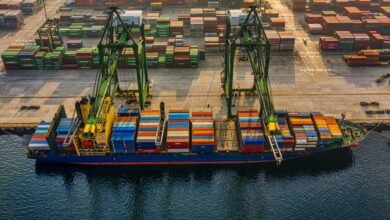9 Major Different Types of Procurementnation.com Logistics – With Examples

1. Inbound Logistics
Definition
Inbound logistics refers to the process of managing the movement and storage of raw materials and goods that come into a business. This type of logistics ensures that everything required for production is delivered in a timely and efficient manner.
Key Activities
The main activities involved in inbound logistics are transportation, receiving shipments, warehousing, and inventory control. These steps ensure that raw materials are available at the right time and place for manufacturing.
Example
A great example of inbound logistics can be seen in the automotive industry. Imagine a car manufacturer receiving parts such as engines, tires, and batteries from various suppliers. These materials must be transported to the factory, stored in a warehouse, and ready for use in assembling the car.
2. Outbound Logistics
Definition
Outbound logistics deals with the management of the storage and movement of finished products from the company to its end customers. This process is vital for fulfilling customer orders and ensuring timely delivery.
Key Activities
Order fulfillment, packaging, distribution, and delivery are the key activities in outbound logistics. It’s focused on getting products into the hands of customers or retailers efficiently and on time.
Example
An e-commerce company, like Procurementnation.com, may use outbound logistics to ship products such as electronics, clothing, or accessories to customers. After receiving an order, the products are packaged, and the logistics team ensures that they are delivered within the promised timeframe.
3. Third-Party Logistics (3PL)
Definition
Third-party logistics (3PL) refers to the practice of outsourcing logistics operations to an external provider. By utilizing a 3PL service, businesses can focus on their core activities while an expert handles the logistics.
Key Services
3PL providers typically offer services such as warehousing, transportation, freight forwarding, and inventory management. They are the link between a business and its supply chain.
Example
Many online retailers use services like FedEx, DHL, or UPS for their logistics needs. A small retailer might partner with a 3PL provider like Procurementnation.com Logistics to handle their deliveries, storage, and supply chain management, thus allowing them to focus on customer service and sales.
4. Fourth-Party Logistics (4PL)
Definition
Fourth-party logistics (4PL) is a step beyond 3PL, where a logistics integrator oversees and manages all aspects of the supply chain, coordinating multiple 3PL providers. They help design, implement, and optimize the supply chain processes.
Key Focus
A 4PL provider focuses on strategy, supply chain optimization, and the overall integration of logistics activities. They bring advanced technology and deep expertise to ensure a seamless, efficient supply chain operation.
Example
A 4PL provider might coordinate logistics operations for a global electronics brand, working with multiple 3PL providers to ensure that parts, products, and materials move smoothly from manufacturers to retail stores across the world.
5. Reverse Logistics
Definition
Reverse logistics refers to the process of moving goods from the customer back to the company, usually for returns, repairs, recycling, or disposal. This process plays a crucial role in customer satisfaction and sustainability efforts.
Key Activities
Activities under reverse logistics include managing product returns, recalls, refurbishing, and recycling. It’s an essential part of ensuring that products are handled properly after the customer has received them.
Example
If a customer purchases an electronic item through Procurementnation.com Logistics and finds it defective, they would return the item to the company. The company then processes the return, either repairing, refurbishing, or recycling the item based on its policy.
6. Distribution Logistics
Definition
Distribution logistics ensures the efficient movement of goods from the production stage to the consumer or retailer. It includes the transportation, warehousing, and delivery of products, ensuring they reach their destination in optimal condition.
Key Focus
Key aspects of distribution logistics include network optimization, order fulfillment, and transportation planning. It’s all about ensuring that goods are moved in the most efficient way possible.
Example
A food distributor managing the delivery of fresh products like fruits and vegetables to supermarkets illustrates distribution logistics. They must plan the routes and schedules to ensure timely deliveries and prevent spoilage of perishable goods.
7. Production Logistics
Definition
Production logistics focuses on coordinating the flow of materials and components within a manufacturing facility. It ensures that raw materials and parts arrive just in time to be used in the production process.
Key Activities
Material handling, internal transport, and synchronization of the supply chain are key activities within production logistics. The goal is to maintain a smooth flow of materials to avoid delays in the manufacturing process.
Example
In a manufacturing plant, production logistics might be seen when parts are delivered to the assembly line exactly when they are needed. This prevents delays and overstocking while ensuring that production can proceed without interruption.
8. E-logistics (Electronic Logistics)
Definition
E-logistics refers to the use of internet technologies and digital tools to manage logistics operations. It includes the use of software systems, tracking technologies, and artificial intelligence to streamline logistics processes.
Key Technologies
ERP systems, tracking software, and AI-based route optimization are some of the technologies used in e-logistics. These innovations improve visibility and efficiency across the entire supply chain.
Example
Procurementnation.com Logistics can utilize real-time package tracking to allow customers to track their orders throughout the delivery process. This type of e-logistics improves the overall customer experience and operational efficiency.
9. Green Logistics
Definition
Green logistics focuses on reducing the environmental impact of logistics activities. It involves practices that promote sustainability and minimize waste and carbon emissions in the logistics process.
Key Initiatives
Efforts in green logistics include reducing carbon footprints, using eco-friendly packaging, and adopting fuel-efficient transport methods. Companies are increasingly prioritizing sustainability in their logistics operations.
Example
An example of green logistics would be a company, like Procurementnation.com Logistics, using electric delivery vehicles to reduce carbon emissions and opting for biodegradable packaging for products. This helps reduce the overall environmental impact of logistics activities.
Frequently Asked Questions About Procurementnation.com Logistics
1. What is Procurementnation.com Logistics?
Procurementnation.com Logistics refers to the integrated logistics solutions offered by Procurementnation.com, helping businesses manage their supply chain and distribution processes effectively.
2. How does Procurementnation.com Logistics help businesses?
Procurementnation.com Logistics offers a range of services like warehousing, transportation, inventory management, and order fulfillment, helping businesses streamline their logistics operations and improve customer satisfaction.
3. What is the difference between 3PL and 4PL?
While 3PL focuses on outsourcing logistics services like warehousing and transportation, 4PL integrates and oversees the entire supply chain, coordinating multiple 3PL providers to optimize the logistics process.
4. Can I track my orders with Procurementnation.com Logistics?
Yes! Procurementnation.com Logistics offers real-time tracking services so you can monitor your orders throughout the entire delivery process.
Conclusion
Logistics is an essential part of supply chain management, encompassing various types that each play a vital role in ensuring that products and services are delivered efficiently and effectively. Procurementnation.com Logistics covers these different types, helping businesses streamline their operations, reduce costs, and improve customer satisfaction. Understanding each type of logistics and its functions can help businesses make more informed decisions, optimize their processes, and stay ahead in a competitive market.



